 |
 |
 |
| |
Aging PLWH & Higher Readmission Hospital Rates than the General Population
Hospital Readmissions Fall in Big HIV Group But Still High vs Non-HIV Patients
|
| |
| |
IAS 2021, 11th IAS Conference on HIV Science, July 18-21, 2021
Mark Mascolini
Thirty-day hospital readmission rate in North Americans with HIV dropped about 4 percentage points from 2005 through 2015, according to analysis of more than 16,000 initial admissions [1]. Researchers who conducted the study cautioned that, although the finding looks promising, 2015 readmissions of this HIV group with a median age of 52 virtually mirrored the rate in the general US population of people 65 or older.
In the 2000s rates of readmission to the hospital within 30 days for people with HIV stood at about 19% [2]. To see if improvements in antiretroviral therapy and overall HIV care trimmed 30-day readmission rates since then, NA-ACCORD collaborators working with 1 Canadian and 5 US cohorts updated these analyses to 2005-2015.
Participants from 6 HIV cohorts had all had been admitted to a hospital without another admission in the previous 30 days. After their discharge, NA-ACCORD statisticians estimated the rate of hospital readmission within 30 days using linear risk regression models adjusted for NA-ACCORD cohort, calendar year, gender, race/ethnicity, HIV acquisition risk factor, age, CD4 count, and viral load at the index (initial) admission. They used the same method adjusted for the same variables to estimate risk difference per year.
The analysis included 16,107 index admissions involving 7328 people with HIV, 73% of them cisgender men, 27% cisgender women, and under 1% transgender; 39% of these people were white, 39% black, 15% Hispanic, and the rest of another or unknown race/ethnicity. HIV risk factor was sex between men for 40%, sex between men and women for 39%, and injecting drugs for 20%. Median 2005 CD4 count stood at 362, and 59% had a viral load below 400 copies. Median age measured 44 in 2005 and 52 in 2015.
For all index admissions, the 30-day readmission rate dropped 0.3% yearly from 20.1% in 2005 to 16.2% in 2015, for an overall decline of 3.9 percentage points. For every calendar year, the adjusted risk difference for 30-day readmission fell 0.2% (95% confidence interval [CI] -0.4 to 0.0). Other factors linked to readmission in this adjusted analysis were:
- Age 50-59 (vs under 40), adjusted risk difference (aRD) 3.2% (95% CI 1.2 to 5.1)
- Age 60 or older (vs under 40), aRD 4.1% (95% CI 1.8 to 6.4)
- CD4 count below 50 (vs above 500), aRD 12.6% (95% CI 9.8 to 15.3)
- CD4 count 50-200 (vs above 500), aRD 7.0% (95% CI 4.9 to 9.0)
- CD4 count 201-350 (vs above 500), aRD 2.8% (95% CI 1.1 to 4.6)
- CD4 count 351-500 (vs above 500), aRD 1.7% (95% CI 0.0 to 3.4)
Gender, viral suppression, HIV transmission risk, and race/ethnicity did not affect readmission risk in this analysis.
Even though median age rose from 44 to 52 from 2005 through 2015, the readmission rate dipped 3.9 percentage points to 16.2% in that period. Notably, median CD4 count over this period climbed from 275 to 460 and the proportion of people with a viral load below 400 copies jumped from 49% to 75%. In comparison, 30-day readmissions among US Medicare beneficiaries 65 or older fell 1.4 percentage points over 2010-2016 to reach 16.0%, virtually identical to the 2015 readmission rate in the HIV group with a median age of 52.
The NA-ACCORD investigators called for continuing efforts to avert readmissions of HIV-positive people by better managing comorbid conditions and addressing unmet social needs.
References
1. Davy-Mendez T, Napravnik S, Hogan BC, et al. Thirty-day hospital readmission rates among North Americans living with HIV, 2005-2015. IAS 2021, 11th IAS Conference on HIV Science, July 18-21, 2021. Abstract PEB135.
2. Berry SA, Fleishman JA, Yehia BR, et al. Thirty-day hospital readmission rate among adults living with HIV. AIDS. 2013;27:2059-2068. doi: 10.1097/QAD.0b013e3283623d5f.
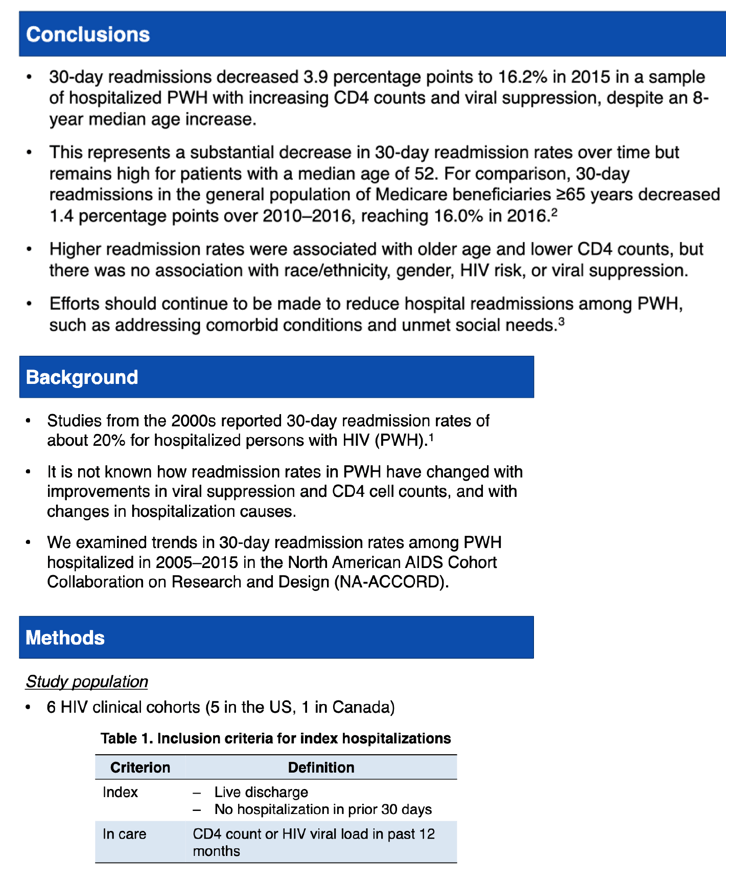
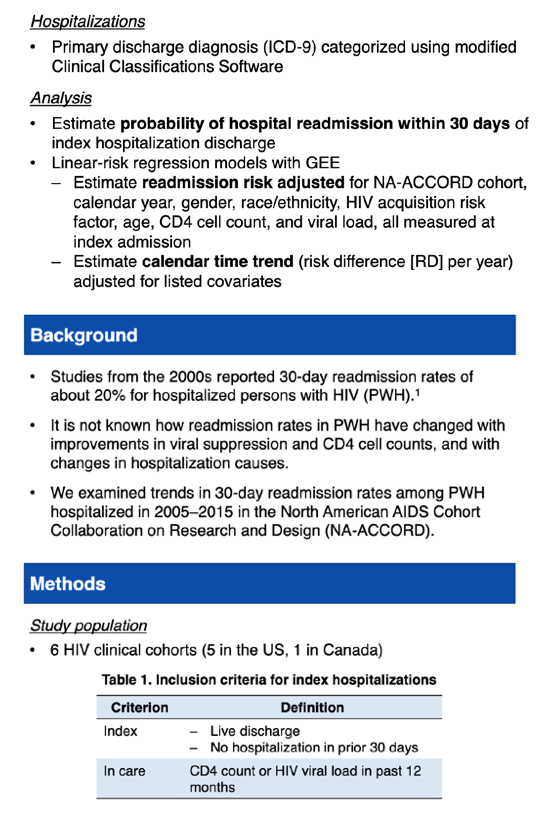
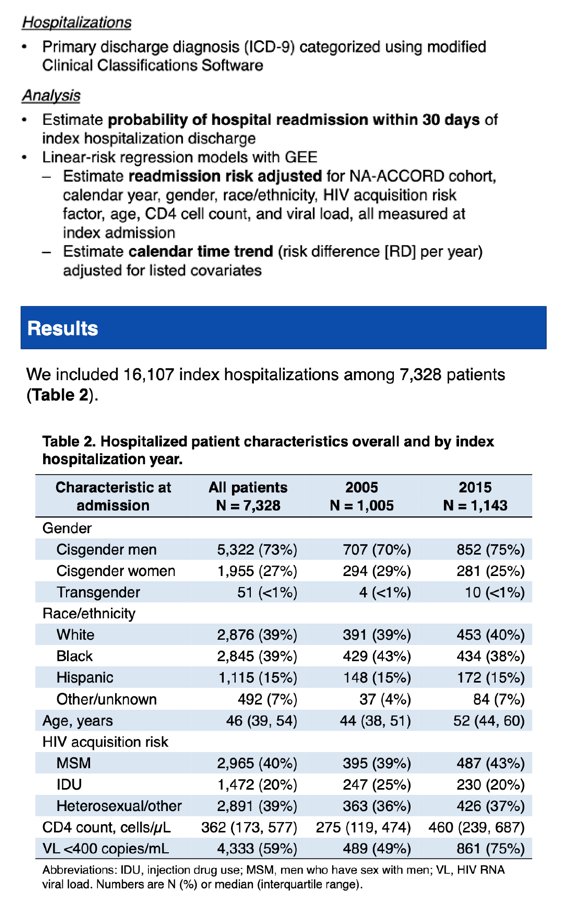
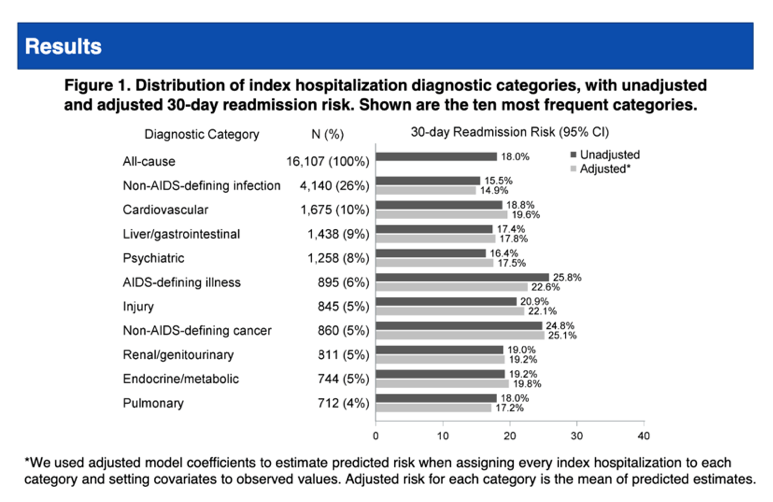
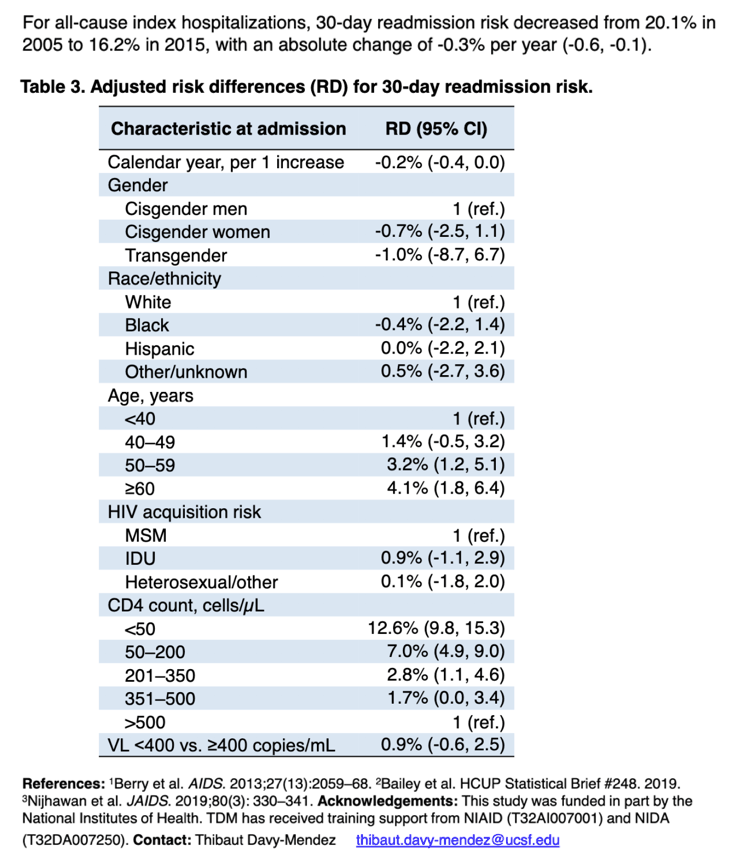
|
| |
|
 |
 |
|
|